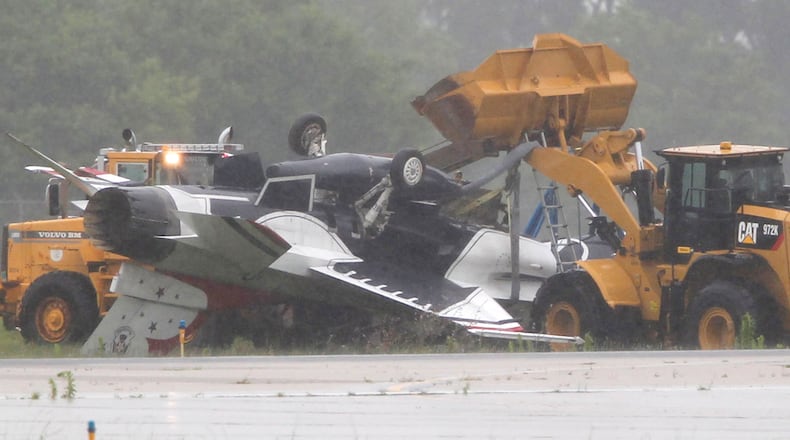“If the wind provided by Mother Nature is already providing some lift to the wing and you have the taxiing adding lift as well, the gust could be enough to get the wing up,” Currell said.
RELATED: Thunderbird F-16 pilot in good condition
The cause of the accident is still being investigated, but the United States Air Force Thunderbirds Facebook site said “the Thunderbirds were conducting a single-ship familiarization flight on Friday June 23, 2017. Upon landing there was a mishap at the Dayton International Airport with an F-16D Fighting Falcon at approximately 12:20 p.m. Emergency services are on the scene. We will provide more information as it becomes available.”
With wind and rain most of the morning the weather likely played a role in the accident, said Currell and Retired Col. Richard Lohnes, former commander of the 178th Fighter Wing in Springfield. He flew fighter jets for 34 years and the F-16 for 15 years.
“A 30 mile an hour gust of wind would have an effect,” said Lohnes, who is president of the Clark County Commission. “With all that rain if the main landing gear got off the taxiway into the mud that would make it even easier to flip over.”
RELATED: What you need to know about the Thunderbirds
The weight of the plane also could play a role.
“It doesn’t weigh all that much and it’s aerodynamic to fly, so wind can have an effect on it,” Lohnes said. “When we park them we tie them down.”
Currell, who has flown both the F-16 and F-4, said some planes are easier than others to drive on the runway but the F-16 has a narrow wheelbase that makes it harder to drive, especially if rain puddles created a hydroplane situation.
“Other airplanes are like trucks on the ground. That plane is not,” said Currell. “They are magnificent in the air. On the ground they are like the proverbial duck out of water.”
About the Author

